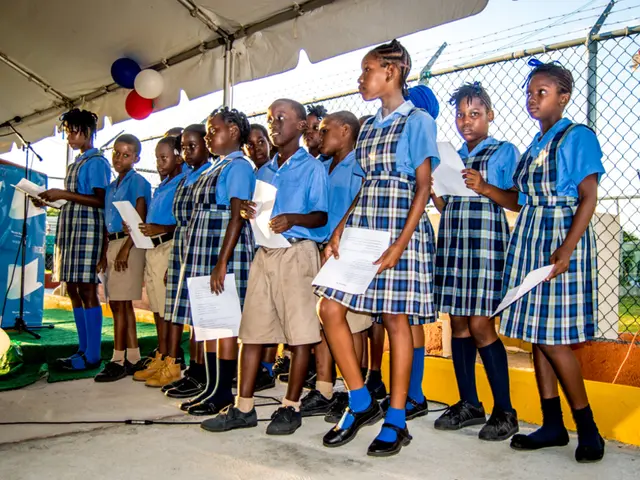Unique happenings are unfolding within the American real estate sector
Rebalancing of the U.S. Housing Market: A Shift Towards Balance
After years of seller dominance, the U.S. housing market is experiencing a significant shift towards balance, as outlined in Zillow's latest reports. This trend is particularly noticeable in regions like the Sun Belt and Mountain West.
In June 2025, the median time to pending sale increased to 19 days, up from 11 days in June 2023, indicating a slower pace in sales. This slowdown is due in part to the increase in the number of available homes. The number of active listings in June 2025 was 1.36 million, representing a 17.2% increase from the previous year and the highest since November 2019.
The rise in inventory has given buyers more choices and is a major factor in tempering home price growth. In fact, a record-high 26.6% of home listings dropped prices in June 2025, the highest June share since Zillow began tracking in 2018. This is evident in cities like Denver, Raleigh, and Dallas, where more than a third of sellers lowered their asking prices.
While the shift to a neutral market is significant, the affordability crisis remains a high barrier to entry, especially for first-time buyers. Despite a slight dip in mortgage costs, affordability remains a challenge. Home prices and borrowing rates remain stubbornly high, making it difficult for many potential buyers to enter the market.
Zillow's senior economist, Kara Ng, stated that while the market is rebalancing, the affordability crisis remains a concern. She advises sellers to price competitively and differentiate their listings to attract buyers.
Another key factor driving this rebalancing is the slowing rent growth. With more homes available for sale, rental growth has softened because some potential renters are moving into homeownership. Zillow projects rent increases of 2.75% for single-family homes and only 1.3% for multifamily units in 2025, down from higher rates in 2024.
The Sun Belt and Mountain West have seen housing market dynamics driven by strong migration and growth patterns, but even these areas are experiencing the broader national trends of slower home value appreciation and increased supply, reflecting a market moving toward balance after the tight pandemic-era conditions.
Zillow anticipates the inventory shortfall will continue to shrink, potentially closing the gap by year's end. The forecast suggests that typical home values will drop about 2% by the end of 2025 compared to the start of the year, with existing home sales improving modestly by 2.5% over last year.
In summary, the U.S. housing market is slowly rebalancing due to rising inventory, modest price declines, and easing rent pressures, particularly in growth-focused regions like the Sun Belt and Mountain West. These trends reflect a market adapting to changing affordability and economic conditions rather than expecting any abrupt crash.
Investors may find opportunities in the real estate sector, given the shift in the U.S. housing market towards balance, which could potentially lead to moderated home price growth and increased choices for buyers. Meanwhile, the continues rise in the number of available homes and the slowing rent growth may make it a suitable time for first-time buyers to enter the housing market, provided they can navigate the ongoing affordability crisis.




